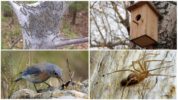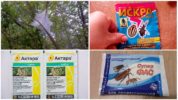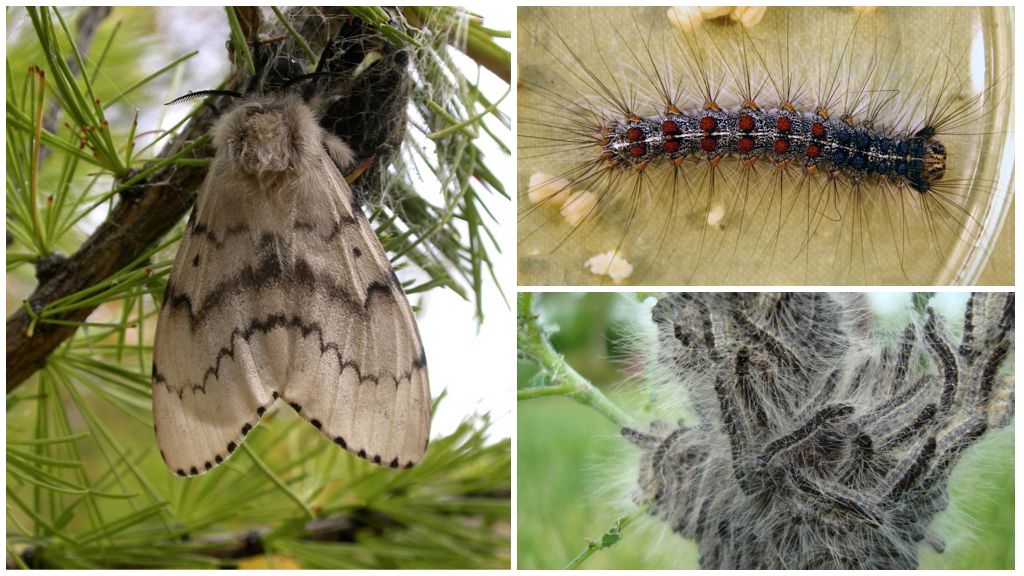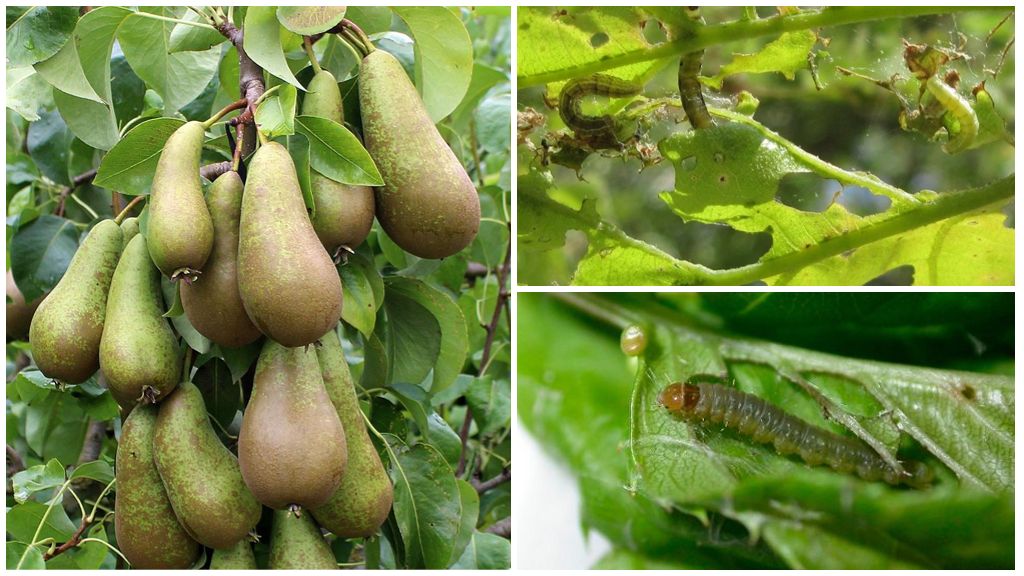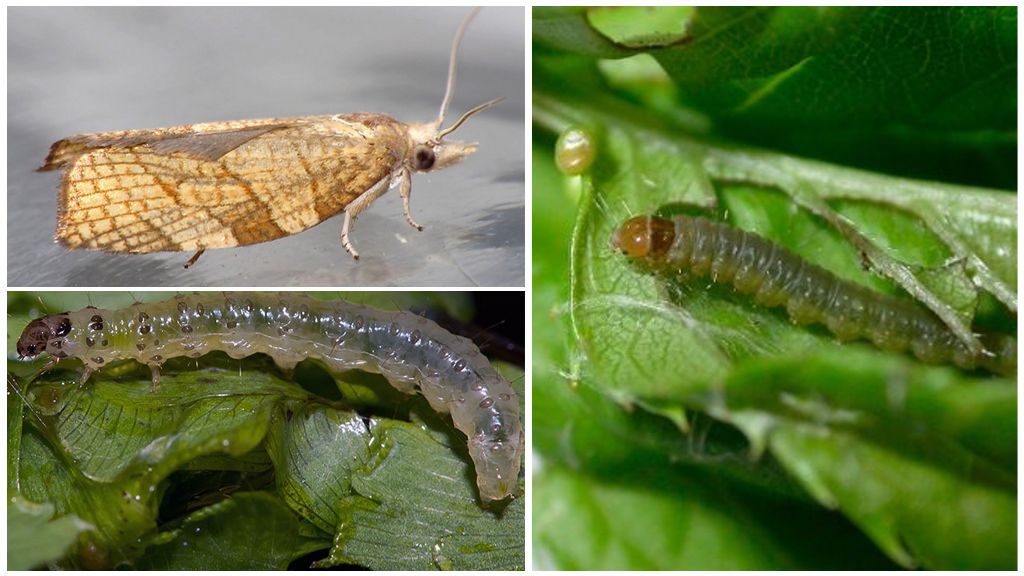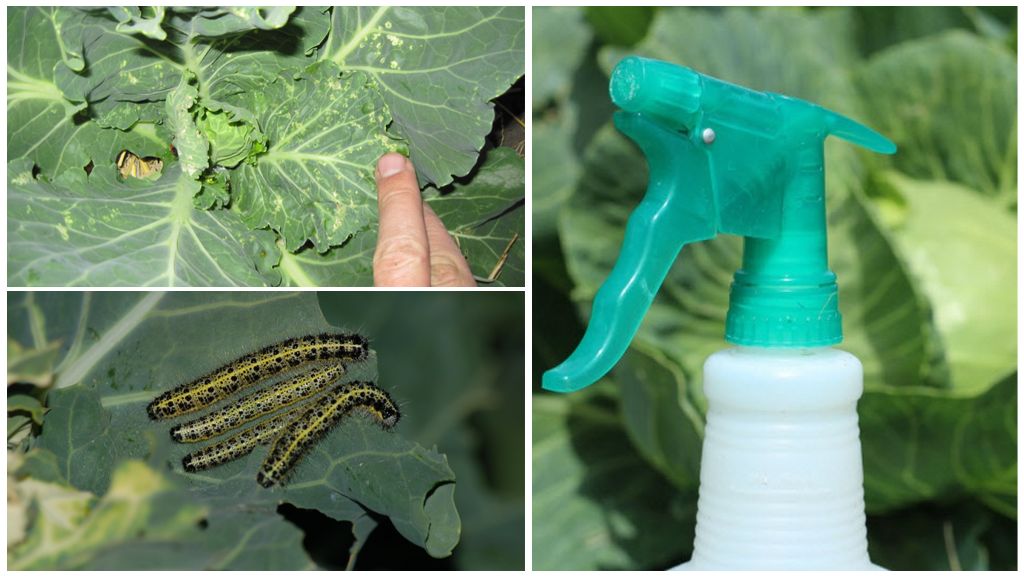- Biological Track Control Methods
- Chemicals Against Caterpillars
- Folk methods of destruction of caterpillars
Caterpillars are insect pests that are in the stage of a larva that can cause irreparable harm to garden crops. Especially future butterflies are attracted by plantations with fleshy leaves. Plant parasites suck out their nutritious juice, which results in the drying and twisting of the green mass. Only timely caterpillar control will help correct the situation and preserve the long-awaited crop.
How to deal with caterpillars
Caterpillars can attack a variety of plants. Processing from caterpillars may need:
Track control consists in a combination of preventive and destructive measures. You can scare off and destroy parasites with:
- mechanical impact;
- through the use of chemicals;
- by attracting natural enemies;
- the use of folk remedies.
Mechanical impact
Mechanical impact is the easiest accessible and safest control method, including not only dropping pests from trees and collecting manually, but also removing overwintered nests and egg-laying. Manual caterpillar collection must be carried out with protective gloves, as many larvae have bristlesprotecting them from enemies.
On a note!
You can also act on butterfly larvae by means of hunting belts, which are placed on the tree trunk to protect its crown. No less effective are traps in the form of cans that are filled with aromatic bait fluids.
However, carrying out such manipulations will give a positive effect with a slight infection of trees or other plantations with caterpillars. If there are already too many insects, the struggle with caterpillars in the garden will not give the proper results. This method will not work for tall trees.
Biological method
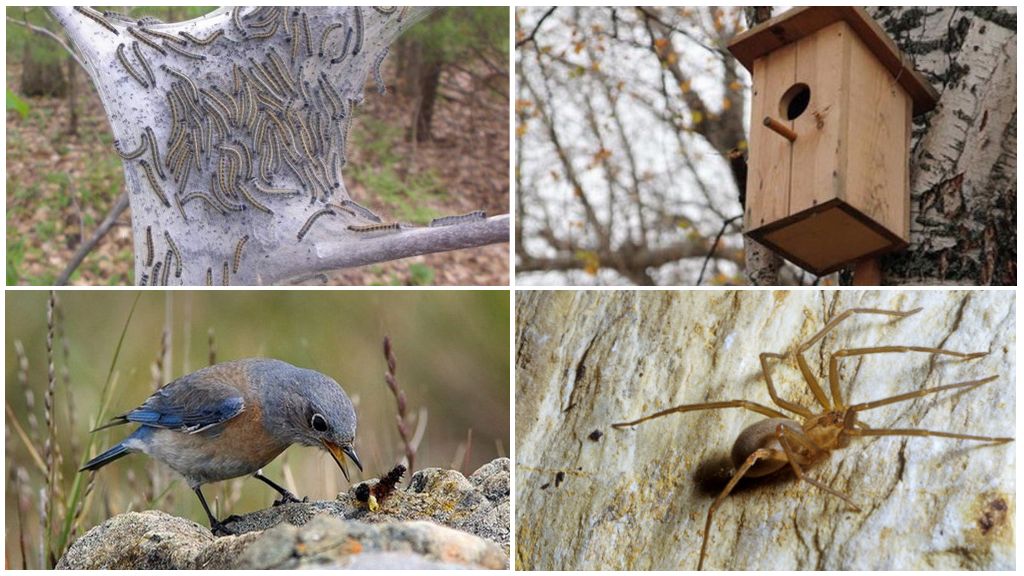
When caterpillars appear on trees, a biological method can also be used to kill pests. It consists in attracting natural enemies. Such are predatory insects (spiders or ticks) and birds (swifts, swallows, tits). For this, in early spring, feeders, birdhouses, etc. are hung on the trees. In the summer, it is not advisable to install such devices.
The biological method of struggle is the use of bacteriological preparations (Bitoxibacillin or Lepidocide), which, when ingested by butterfly larvae, cause their death.
Important!
The disadvantage of such tools is the need to spray the trees repeatedly. Moreover, the composition does not have a negative effect on beneficial insects, and therefore, it can be used for prophylactic purposes. In addition, such funds are “active” at a temperature of at least 18 degrees.
The use of chemicals
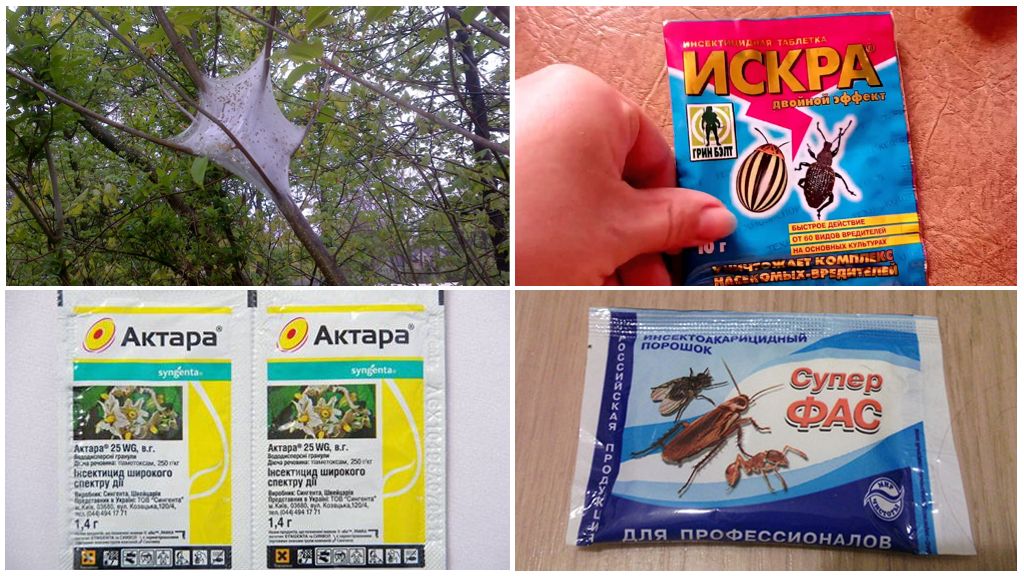
Insecticide-based chemicals are most effective in controlling voracious butterfly larvae. You can poison the caterpillars on the plot using the following drugs:
- Spark and karate;
- Aktara and Taran;
- Inta Vir and Fufanon;
- Rovikurt and Karbofos;
- Lightning and Fas.
When used properly, poison from caterpillars can kill a large number of pests. However, with constant use, the poison is addictive in parasites. In this connection, it is constantly impractical to use the same caterpillar remedy.
Important!
The use of chemicals can cause intoxication of the human body after eating processed fruits, so it is necessary to strictly adhere to the manufacturer's recommendations. Fighting caterpillars on flowers through the use of pesticides is carried out only in cases of the most advanced stage of infection.
How to get rid of caterpillars using folk remedies

Many gardeners try to use folk remedies for caterpillars on fruit trees because they are safer.
- Elderberry red. Caterpillars pests do not tolerate the smell of elderberry. It is enough to prepare a decoction using the stems and leaves of the tree. 200 g of crushed raw materials pour 10 liters of boiling water. After a day, the mixture is filtered. For better fixation of the infusion with the surface of the sheet, laundry soap (40 g) grated on a coarse grater is added to it. The resulting composition is used for spraying trees before and after flowering.
- Belena is black. No less effective on gluttonous pests and decoction of black bleached. To prepare it, it is necessary to grind 2.5 kg of branches and leaves of the tree, pouring them with a small amount of water. The mixture is boiled for half an hour. The resulting volume was adjusted to 10 l, turning off the fire after boiling the mixture. The broth is insisted for 12 hours, filtered and added laundry soap by analogy. A ready-made broth must be sprayed with a tree infected with insects.
- Red pepper. To get rid of black caterpillar urticaria red pepper will help in the garden, or rather tincture from it. 1 kg of raw material is poured into 10 liters of water and boiled for an hour, after which it is insisted for a day. The concentrate is stored in the refrigerator. Before treating them with plants, the composition is diluted with water in a ratio of 12 g of infusion per 10 l of water. To increase the fixing properties, 40 g of laundry soap is added to the composition.
- Vinegar. Handle flowers affected butterfly larvae, and acetic solution is also possible. It is prepared at the rate of 200 g of vinegar per 10 liters of water.
- Onion and garlic. The aroma of plants rich in essential oils is not to their liking. These include garlic, onions and coriander. It is enough to plant such plantations among vegetable beds and insects will not damage the crop.
- Tobacco. To protect the crown of trees from caterpillars is also able to tobacco infusion. 100 g of tobacco is poured into 1 liter of water and insisted for 24 hours. After this time, the mixture is filtered and 40 g of liquid soap are added to it. The finished solution is used as directed.
- Highlander pepper. Effective in the fight against plant parasites and decoction of pepper mountaineer. For its preparation, shoots of a flowering plant are used. 2 kg of chopped stems pour 10 liters of boiling water and insist in a closed container for a day. Strained infusion is used to spray garden crops.
- Pharmaceutical camomile. Similar properties are possessed by infusion from inflorescences of a pharmaceutical camomile. 10 kg of water will require 1 kg of chamomile flowers. The mixture was brought to a boil and insisted for 12 hours. Before use, the concentrate is filtered and diluted with water in a ratio of 1: 3. To enhance the fixing action, for every 10 l of the finished solution add 40 g of laundry soap grated on a coarse grater.
- Tops of tomatoes. Very popular in the fight against various harmful insects is the tops of tomatoes, it is also effective against creeping leaf-eaters. The bucket is filled with slightly dried raw materials and poured to the top with water. The mixture is boiled for an hour, after which it is filtered and diluted with water in a ratio of 1: 5.The resulting solution is used for spraying infected crops with caterpillars.
- Fumigation. Good effect against different types of tracks gives fumigation of fruit trees with smoke. In a heat-resistant vessel, hot coals are placed, which are sprinkled with a mixture of resin and sulfur (the ingredients are taken in a ratio of 1: 2). To pests died, it is enough to fumigate the trees in their lower part.
On a note!
To achieve maximum effect, pest control by fumigation should be done exclusively in calm weather.
When creeping butterfly larvae appear on the plant, you should not waste time, because thousands of harmful individuals that can destroy leaves and young shoots live in the nests. Immediately treat the affected trees and bushes with one or another folk remedy.
